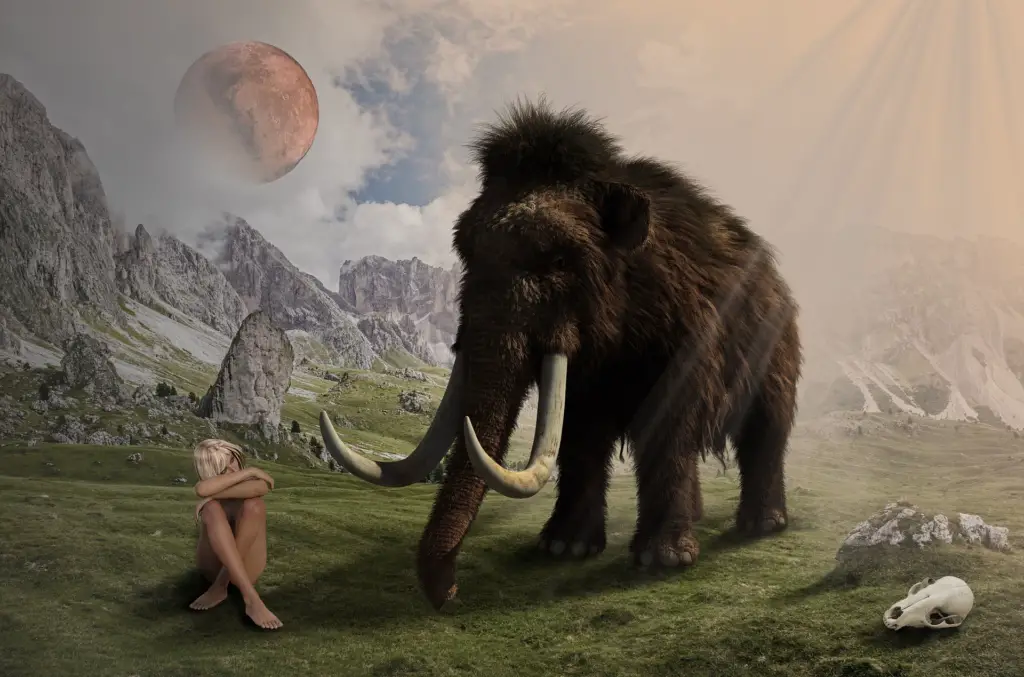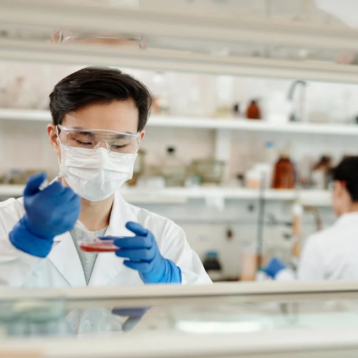
At this year’s Wall Street Journal Future of Everything Festival, industry leaders from around the world, including award-winning actress Uma Thurman, Pfizer CEO Albert Bourla, and Federal Trade Commission Chair Lina Khan, sat down to discuss the transformational trends, challenges, and opportunities across sectors like business, technology, and entertainment.
Among discussions regarding the future of climate science, smartphones, the mental health crisis, and the evolving nature of the music industry, de-extinction expert and Colossal Biosciences founder Ben Lamm led an interesting conversation surrounding the future of gene therapy and his company’s pioneering work reviving the woolly mammoth. Couldn’t make the festival? Here are some highlights from the chat illuminating Colossal Biosciences’ work and how it continues to inform modern conservation and scientific innovation.
Thawing a Future: Woolly Mammoth De-Extinction
As a relatively uncharted scientific territory, most can’t even fathom how to begin the de-extinction process or why Colossal Biosciences would want to embark on this journey. Given its larger-than-life size, the woolly mammoth played a significant role in maintaining the natural order of the Arctic ecosystem, like packing permafrost and supporting the landscape of the tundra. By sharing 99.6% of its DNA with the Asian elephant, the woolly mammoth can also inform conservation and be used as a steppingstone to prevent extinction altogether.
“Elephants are really important to their ecosystems,” said Lamm. “There’s also a lot of reasons to go into developing technologies for developmental biology for elephants, like helping cure [elephant endotheliotropic herpesviruses], which kill about 20% of all elephants every single year.”
While de-extinction involves a multitude of emerging sciences and technologies, from the use of CRISPR gene-editing technology to the creation of artificial wombs and reprogrammed stem cells, at its foundation it requires the procurement of massive amounts of ancient DNA locked away in woolly mammoth specimens.
“So they’re not in a big block of ice, we’re not just thawing them. But they’ve gone in and actually had to do drilling into their teeth, into these teeth bones, as well as into tusk into the petrous bones,” Lamm explained. “So we actually have about 65 mammoth genomes that we’ve had to use [artificial intelligence] and software to help assemble a reference genome.”
From there, the team at Colossal is working on innovations in genomic engineering, synthetic biology, and even cloning to turn an Asian elephant’s cells into those with traits resembling a woolly mammoth.
“We’ve taken cloning efficiencies in our lab from about 2% to about 78%, which is pretty unheard of right now in the industry,” Lamm noted.
“And so, we parallel path all these processes, but you start with an Asian elephant cell,” he continued. “And then you use a myriad of these tools, including CRISPR, large DNA cargo, swap single nucleotide edits, and you start making these edits to the genome of a cell, and then you get to the cloning step at the end.”
Despite the ease with which Lamm explains the de-extinction process, it’s nothing if not arduous. Given the extent of the woolly mammoth’s genome — which contains enough letters to write 6,888 novels — Colossal Biosciences has gone so far as to develop its own computational software and spinout company known as Form Bio to perform comparative analyses between the Asian elephant and woolly mammoth genome.
This software is currently being used for innovative novel drug discovery and cancer research, representing a fraction of the applications that Colossal’s work has had beyond de-extinction.
Colossal Biosciences’ Opportunities for Gene Therapy and Beyond
Considering the sheer depth of innovation required to make the woolly mammoth’s return a reality, it’s no surprise that Colossal’s work has major applications in gene therapy and sustainability.
Earlier this year, Colossal made history when its spinoff company, Breaking, leveraged its innovative tool kit to develop a microbe called X-32. This microbe consumes multiple types of plastic and has been shown to degrade up to 90% of polyesters and polyolefins in less than 22 months with no harmful byproducts.
“Using synthetic biology and genetic engineering, we can take things that took 10,000 years to break down and shrink it down into breaking it down, and that plastic being eaten in only hours and days,” Lamm pointed out. “And so, I think that there’s a huge application for synthetic biology in us engineering life to better suit not just our way of life on the planet, but also to undo some of the sins of the past that we have caused.”
While the company has no plans to branch into human health care, its work is already informing critical sciences like cancer research and gene therapy. As a component of woolly mammoth de-extinction, Colossal Biosciences recently developed Asian elephant induced pluripotent stem cells that propagate indefinitely and can be reprogrammed into any cell in the body.
These iPSCs have been crucial to the study of disease and advancement of gene editing in animals and humans alike, but have been particularly difficult to develop for elephants given the species’ robust cancer defenses that cause newly reprogrammed cells to self-destruct given their resemblance to the early stages of cancer.
To develop elephant iPSCs, these defenses, maintained by a protein called P53, had to be regulated and suppressed. Because P53 is carried in all mammals, this research has the potential to inform human cancer research.
“While we are not then taking P53 research and regulation into the medical field, we have several research collaborators around the world that are interested in taking some of our methods and patents around that, and seeing if it could be applied to cancer,” said Lamm.
Given the lack of funding put toward conservation, Lamm believes in leaving the company’s conservation advancements open-source but maintains that the human applications of its work will be a vital source of the company’s monetization.
Lamm explained, “When you look at a hard systems problem [like de-extinction] and you have to innovate across embryology and genetic engineering, you start to develop crazy tools that can be massively beneficial and massively monetizable.”
Ramifications of Rewilding
As Colossal Biosciences works to bring back species like the woolly mammoth, dodo, and Tasmanian tiger, it has maintained the involvement of critical stakeholders like Indigenous peoples, governmental agencies, and scientific organizations to ensure the continued well-being of these species’ native ecosystems.
Although Colossal remains years out from the fruition of de-extinction, as a moonshot company, Lamm is confident that technological advancements expedited by Colossal’s efforts will have a lasting impact across industries. Regardless of what’s in store for the company, it’s clear that it has already transformed the future with its innovations in conservation, sustainability, and gene therapy.
When asked whether he believes a goal as ambitious as de-extinction is worthy of Colossal’s extensive resources and scientific acumen, Ben Lamm remarked:
“I’m a big believer that we need to innovate and build these technologies. And I think that fundamentally having the ability to engineer life, and capabilities like these microbes or like mammoths, I think will change what we can do for human health care, and how we can help people that are sick.”










